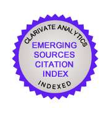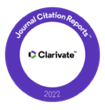Beyond the Temple as a Thing, as an Instrument and as a Work of Art. A Heideggerian Interpretation
DOI:
https://doi.org/10.22530/ayc.2024.25.729Keywords:
Heidegger, temple, beauty, art, truthAbstract
What is left of the temple when the gods have fled? What happens to the temple when it does not put the truth into action, when it is no longer an origin? What happens when the cultural tourist does not believe that the temple is the abode of a god? The truth that opens the work of art has a historical character, and when other worlds have burst in, when other epochs have passed and it seems that the gods have fled, what those works of art deserve is the recognition and contemplation of that open world that the work made bursting in.
References
BELGRANO, Mateo (2020). “De templos y divinidades. El rol de los dioses en El origen de la obra de arte”. Eidos, Colombia, 33, 170-194.
BELGRANO, Mateo (2022a): “Contra el arte domesticado; Una lectura más sobre El origen de la obra de arte y el nazismo”. Logos. Anales del Seminario de Metafísica, España, 55 (2), 183-199. DOI: https://doi.org/10.5209/asem.79846
BELGRANO, Mateo (2022b): “Ecos hegelianos en “El origen de la obra de ar-te” de Martin Heidegger”. ÉNDOXA, España, 50, 2022, 167-185.
BENVENISTE, Émile (1983): El vocabulario de las instituciones indoeuropeas. Taurus.
DOMÍNGUEZ, Javier (1991): “La teoría estética en Heidegger”. Areté, Perú, III, (2), 183-205. https://doi.org/10.18800/arete.199102.001
GARRIDO PERIÑÁN, Juan José (2015): “Lichtung: el claro del ser. Un estudio a raíz de las meditaciones de Holzwege”. Agora: Papeles de filosofía, España, 34(2), 161-177. DOI http://dx.doi.org/10.15304/ag.34.2.2188.
HEIDEGGER, Martin (2001): “Ciencia y meditación”, en Conferencias y artícu-los. Ediciones del Serbal.
HEIDEGGER, Martin (2005): Parménides. Akal.
HEIDEGGER, Martin (2007): Seminarios de Zollikon: protocolos, diálogos, cartas. Jitanjáfora Morelia y Red Utopía, Edición de Medard Boss.
HEIDEGGER, Martin (2010): ¿Qué significa pensar? Editorial Trotta.
HEIDEGGER, Martin (2014a): Introducción a la metafísica. Gedisa.
HEIDEGGER, Martin (2014b): Experiencias del pensar. Abada Editores.
HEIDEGGER, Martin (2016): El origen de la obra de arte. La Oficina.
HEIDEGGER, Martin (2020): Ser y Tiempo. Editorial Trotta.
HERMANN, Friedrich-Wilhelm von (1994): Heideggers Philosophie der Kunst: Eine systematische Interpretation der Holzwege-Abhandlung, “Der Urspung des Kunstwerkes”. Vittorio Klostermann.
LEYTE, Arturo (2016): Postscriptum a “El origen de la obra de arte”. La Oficina.
PADELETTI, Hugo (1963): Arte y poesía en Heidegger. Universidad. Publica-ción de la Universidad Nacional del Litoral, Argentina, 03(55), 153-188.
PEVSNER, Nikolaus (1994): Breve historia de la arquitectura europea. Alianza Forma.
ROTH, Leland M. (1999): Entender la arquitectura. Sus elementos, historia y significado. GG.
RYKWERT, Joseph (2002): La idea de ciudad. Ediciones Sígueme.
SAFRANSKI, Rüdiger (2022): Un maestro en Alemania. Martín Heidegger y su tiempo. Austral.
VITRUVIO, Marco (1993): Los Diez libros de Arquitectura. Barcelona. Alta Fu-lla.
WHITNEY, Erika (2021): Heidegger y la verdad de la obra de arte. Diferen-cia(s). Revista de teoría social contemporánea, Argentina, 12, 155-162.
Downloads
Published
How to Cite
Issue
Section
License
Copyright (c) 2024 ARTE Y CIUDAD. Research Journal

This work is licensed under a Creative Commons Attribution-NonCommercial 4.0 International License.











